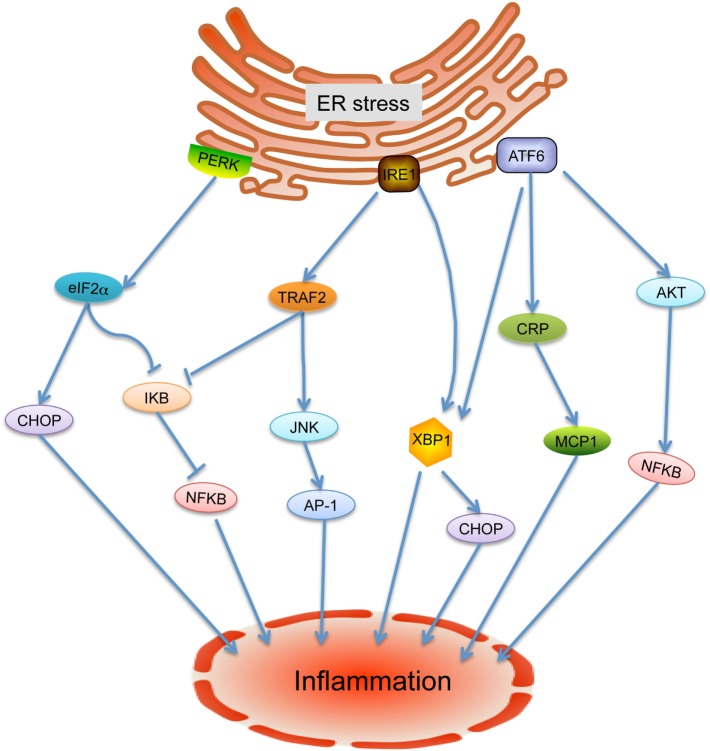Figure 1.
Endoplasmic reticulum (ER) stress-mediated inflammation. Under ER stress condition, the unfolded protein response is activated and leads to release of inositol requiring enzyme 1 (IRE-1), PKR-like eukaryotic initiation factor 2a kinase (PERK), and activating transcription factor-6 (ATF6). IRE-1 recruits tumor necrosis factor-α-receptor-associated factor 2 (TRAF2) and causes activation of downstream kinases signaling including Jun amino-terminal kinases (JNK) and nuclear transcription factor-κB (NF-κB), inducing the production of inflammatory cytokines. In addition, the activated IRE-1 also cleaves mRNA encoding X-box binding protein-1 (XBP1) to generate mRNA encoding its active form, causing transcription of inflammation associated gene expressions. Cleavage of ATF6 leads to the activation of XBP1, C-reactive protein (CRP), and Akt to induce the inflammatory response. PERK phosphorylates eIF2a, which leads to the aviation of NF-κB and CHOP to further enhance the expression of inflammatory gene.

